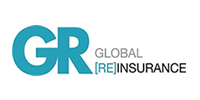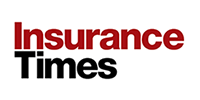‘These fraudsters exploit social media to sell worthless insurance, leaving victims thousands of pounds out of pocket, driving without insurance and at risk of prosecution,’ says chief executive
Reported occurrences of ghost broking have grown by 22% over the past two years, according to new data from insurer Aviva.

Ghost broking is a type of insurance scam whereby fraudsters impersonate legitimate brokers and sell fake or invalid insurance policies to unsuspecting victims.
The crime has a severe impact on the so-called policyholders, with victims finding themselves £2,000 out of pocket on average.
The practice is largely aimed at young drivers aged 17 to 25 via social media platforms. Aviva uncovered one ghost broker who had sold approximately £150,000 of fake insurance to young drivers.
Non-existent policies
The firm also reported that the methodology of the crime has changed in recent years – while traditionally ghost brokers sold real insurance policies with falsified policy details such as age and address, they are increasingly selling policies which have no connection to legitimate insurers whatsoever.
Read: Aviva catches ‘injured’ fraudster on reality TV show and riding rollercoaster
Read: Aviva secures jail time for fraudsters who targeted elderly driver
Explore more fraud related articles here, or discover more news content here
That change makes the criminals increasingly harder to catch and means victims often learn of the issues only after having been involved in an incident or stopped by the police.
Owen Morris, chief executive of UK personal lines at Aviva, said: “Ghost broking is a fast-growing criminal enterprise that targets young drivers on social media sites.
“These fraudsters exploit social media to sell worthless insurance, leaving victims thousands of pounds out of pocket, driving without insurance and at risk of prosecution. They could also potentially be victims of identity or banking frauds in the future.
“The scale of the problem is concerning and it’s getting worse. We’re calling for tougher enforcement, stronger penalties and greater awareness of ghost broking to protect young drivers.”

He graduated in 2017 from the University of Manchester with a degree in Geology. He spent the first part of his career working in consulting and tech, spending time at Citibank as a data analyst, before working as an analytics engineer with clients in the retail, technology, manufacturing and financial services sectors.View full Profile
Hosted by comedian and actor Tom Allen, 34 Gold, 23 Silver and 22 Bronze awards were handed out across an amazing 34 categories recognising brilliance and innovation right across the breadth of UK general insurance.























































No comments yet